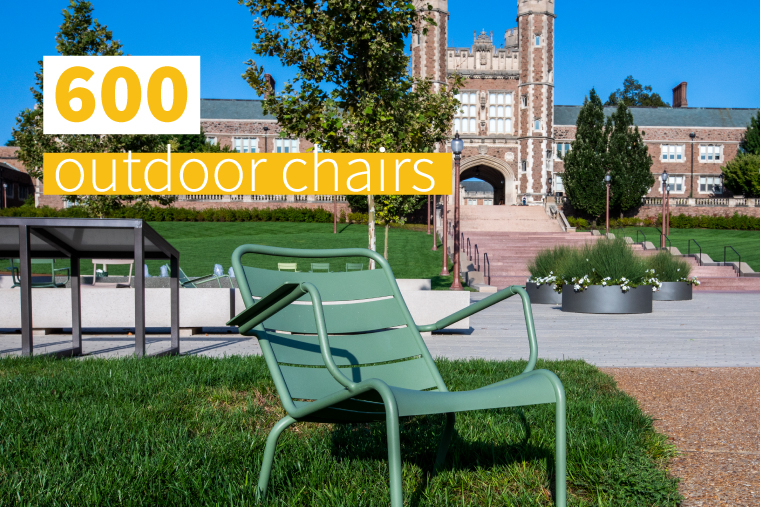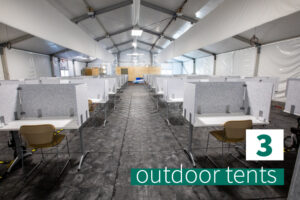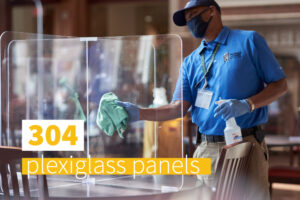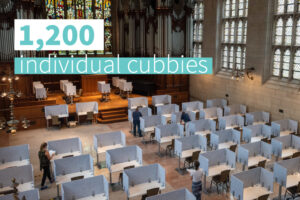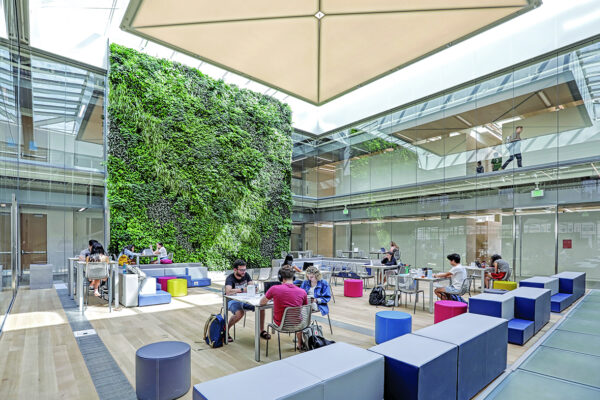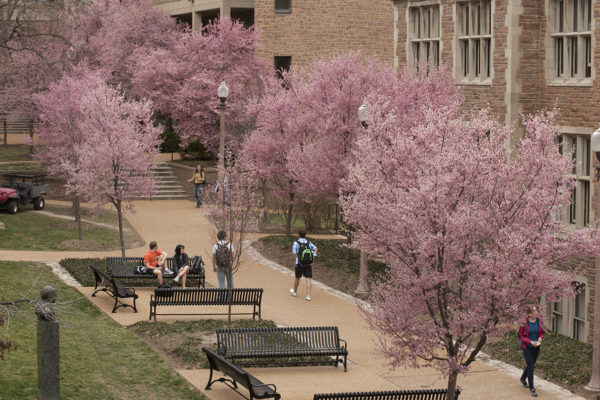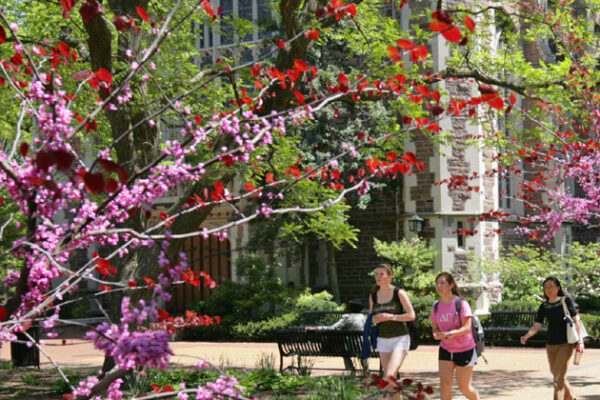It looks the same, yet feels different, this 169-acre Danforth Campus that is home to Washington University in St. Louis.
It was already roomy but needed expansiveness, already vast but needed more space thanks to COVID-19, the virus that rudely interrupted 2020, made our lives unrecognizable, masks essential and phrases like physical distancing part of our vocabulary.
And since the beginning of summer, when it became clear that the fall semester would be as challenging and formidable as had the second half of spring, plans were put into action to make the campus as safe as possible for returning students, faculty and staff.
“What we did was ‘de-densify’ the campus,” said J.D. Long, associate vice chancellor for facilities planning and management. “We had to create space.”
Classrooms are now outfitted with fewer chairs and reconfigured teaching areas that help faculty teach both remotely and in person. Sanitary wipes and hand sanitizer are as ubiquitous in learning spaces as clocks — more than 750 new hand sanitizer dispensers were installed on campus over the summer. Also among the stock Purchasing Services acquired was some 5,000 gallons of hand sanitizer; more than 15,000 canisters of disinfectant wipes and more than 3,000 bottles of disinfectant spray. Also on hand: 30,000 boxes of disposable masks, 50 in each one, for a total of 1.5 million.
“We analyzed every building and every room, and went through a process to say, ‘This is what we need to do in this space’ or ‘This space is good as it is,'” said Jamie Kolker, associate vice chancellor and university architect.
Added Long: “We worked with an outside consultant to see what assets have fresh-air makeup and which do not.
“We’re increasing filtration, we’re increasing airflows, and we’re doing responsible things in places where people gather.”
To address the need for more space for students to study and take classes online, three new, spacious semi-permanent walled tents have been erected: on the South 40; the Mudd Field tent at the west end near Seigle Hall; and the Tisch Park Tent near the bottom of the Brookings Hall steps. Each of them has ample seating capacity with floors, self-sustaining power, air conditioning and heat and an air filtration system.
Some 1,200 cubbies are sprinkled in the three tents and in 15 different buildings on campus, in existing places such as Graham Chapel, Holmes Lounge, Olin Library, including Whispers Cafe, and others. With some exceptions, study cubbies are available from 8 a.m. to 8 p.m. Monday through Friday. Reservations, which students can make in two-hour time slots (not to exceed eight hours in one day), can be made through Campus Life Event Management.
“The cubbies are designed to be multi-purpose,” Long said. “You can do Zoom learning for a class, you can study at them, you can eat at them. They will be professionally cleaned once a day and will also be equipped with hand sanitizer and wipes.”
Dining halls have been equipped with plexiglass, too — 304 panels have been placed on spaced-out tables throughout the campus. Floors have clearly marked decals designed to keep foot traffic moving, and hospitality coordinators, a kind of concierge service, are in place to ensure a uniform flow and capacity in each dining area.
Some familiar places look dramatically different: Ibby’s, for example, a popular restaurant space in the Danforth University Center, is now a mini-mart that sells drinks and groceries to go. Mobile ordering has been added to all dining locations as well.
Also new to campus are an additional 600 chairs, such as the ones that made Tisch Park a popular gathering space last year. Some 250 will be scattered throughout the campus, Kolker said, with the remaining 350 complementing 175 new bistro tables for dining. Those will be scattered around the campus for outdoor use as well.
Even with the additions and adjustments, some things haven’t changed: It’s still the Danforth Campus, a hilltop refuge with flowers and trees, expansive walkways, art sculptures and gothic architecture.
— Diane Keaggy also contributed to this story.
